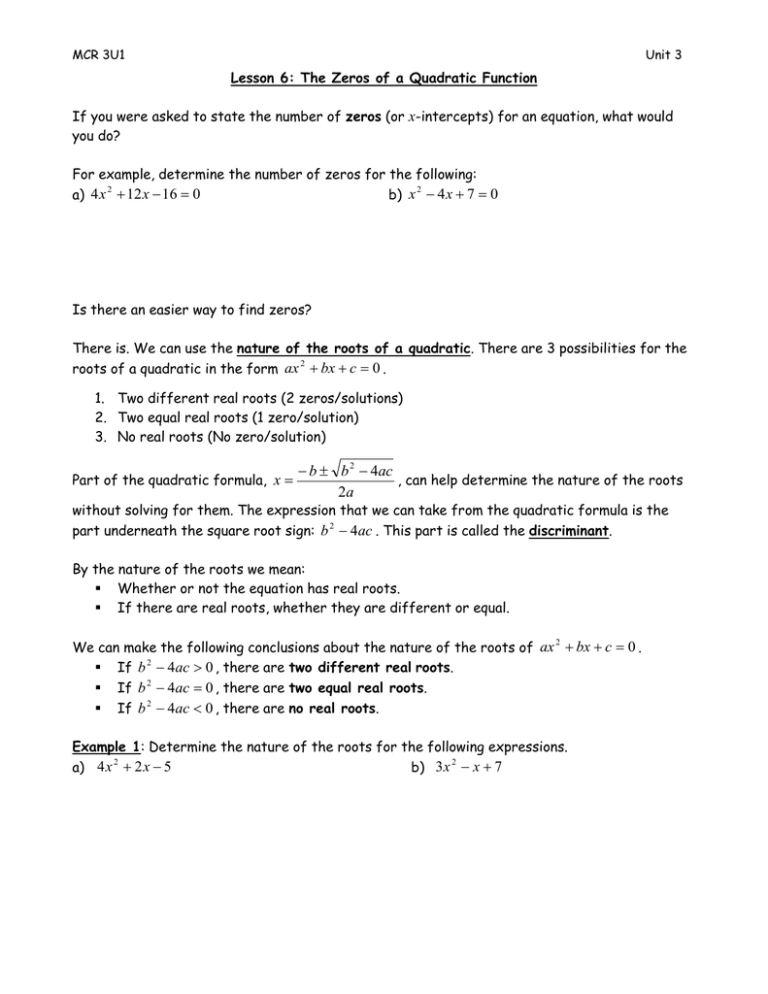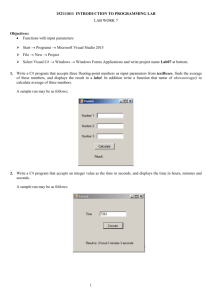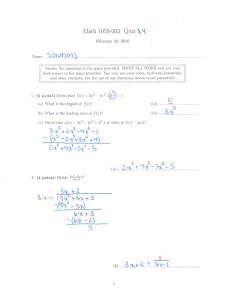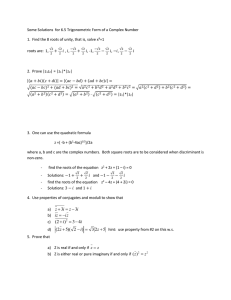x
advertisement

MCR 3U1 Unit 3 Lesson 6: The Zeros of a Quadratic Function If you were asked to state the number of zeros (or x-intercepts) for an equation, what would you do? For example, determine the number of zeros for the following: a) 4 x 2 12 x 16 0 b) x 2 4 x 7 0 Is there an easier way to find zeros? There is. We can use the nature of the roots of a quadratic. There are 3 possibilities for the roots of a quadratic in the form ax 2 bx c 0 . 1. Two different real roots (2 zeros/solutions) 2. Two equal real roots (1 zero/solution) 3. No real roots (No zero/solution) Part of the quadratic formula, x b b 2 4ac , can help determine the nature of the roots 2a without solving for them. The expression that we can take from the quadratic formula is the part underneath the square root sign: b 2 4ac . This part is called the discriminant. By the nature of the roots we mean: Whether or not the equation has real roots. If there are real roots, whether they are different or equal. We can make the following conclusions about the nature of the roots of ax 2 bx c 0 . If b 2 4ac 0 , there are two different real roots. If b 2 4ac 0 , there are two equal real roots. If b 2 4ac 0 , there are no real roots. Example 1: Determine the nature of the roots for the following expressions. a) 4 x 2 2 x 5 b) 3 x 2 x 7 MCR 3U1 Unit 3 Example 2: For what values of k will the function f ( x) kx2 4 x k have no zeros? Example 3: Student council decides it wants to raise money for a local charity. They decide to sell little sticky note graph pads to everyone in the school. The equation f ( x) 0.5 x 2 4 x 11 will determine their profit on the graph pads. Will they raise money for the charity?






